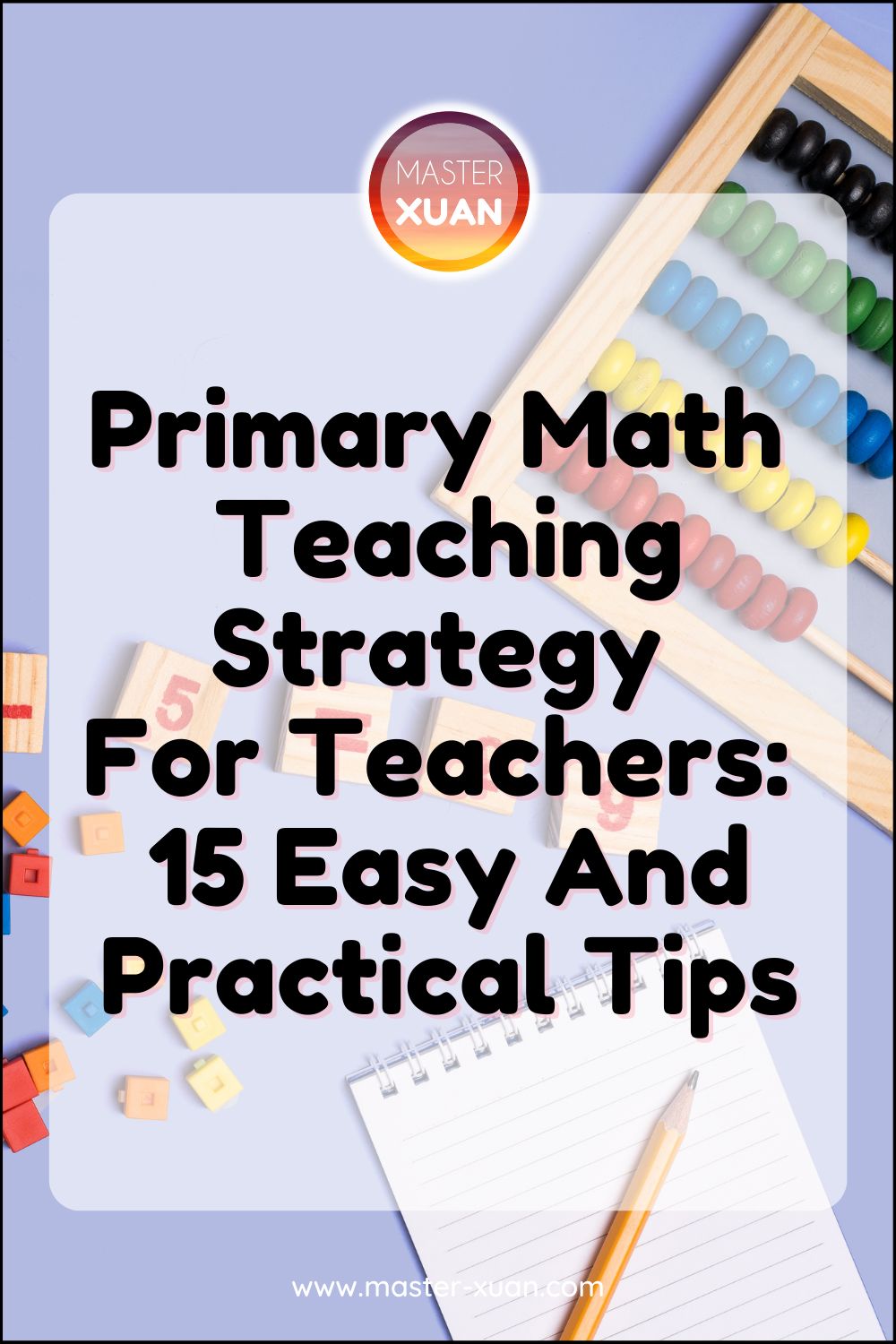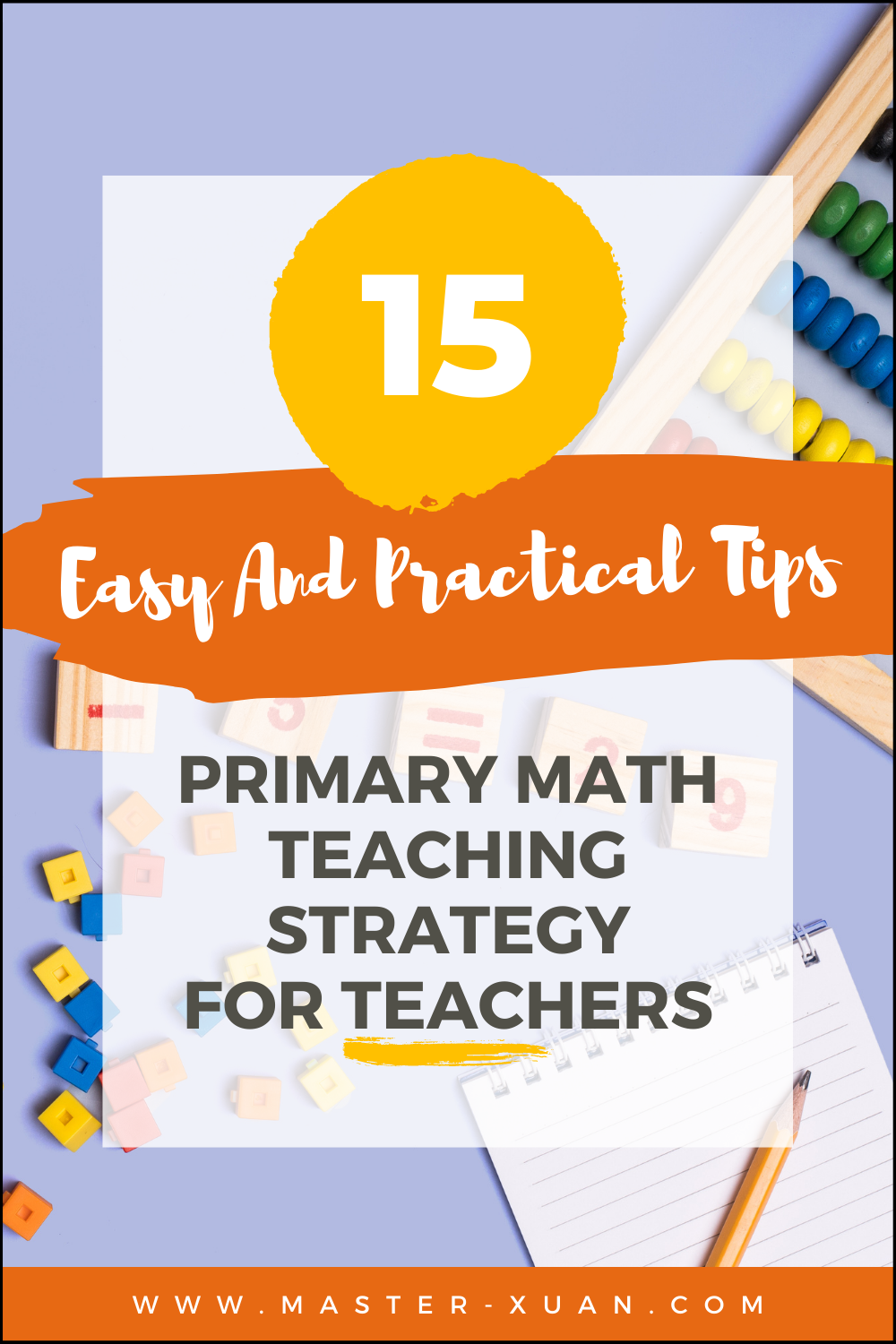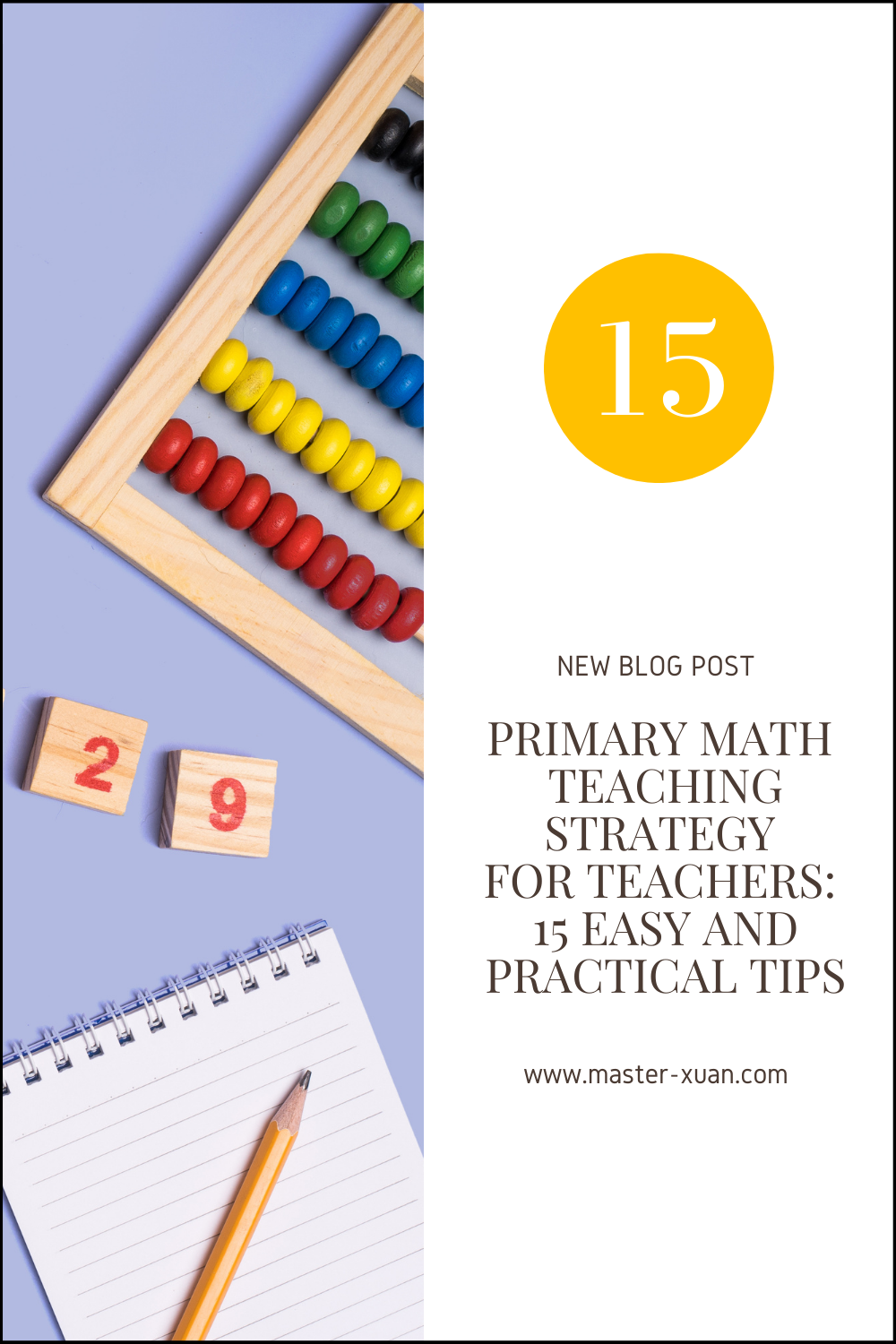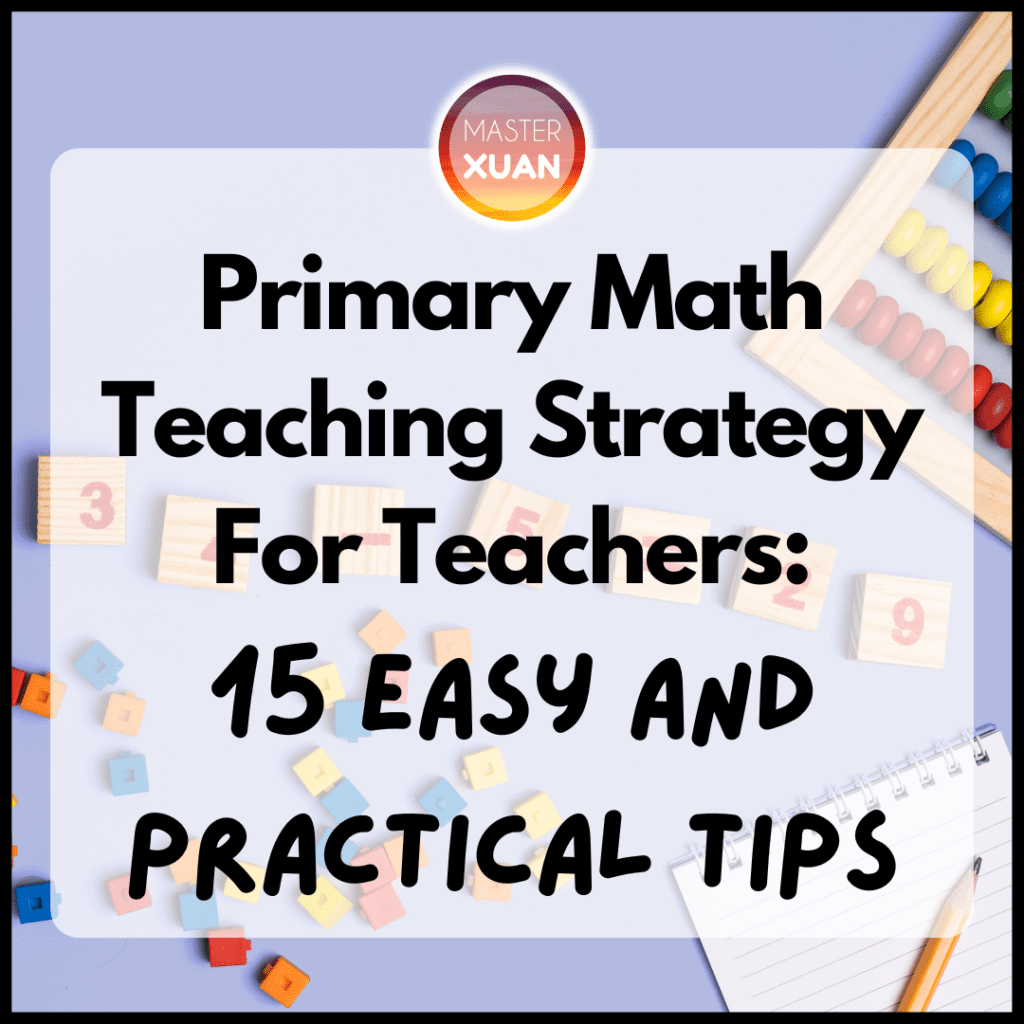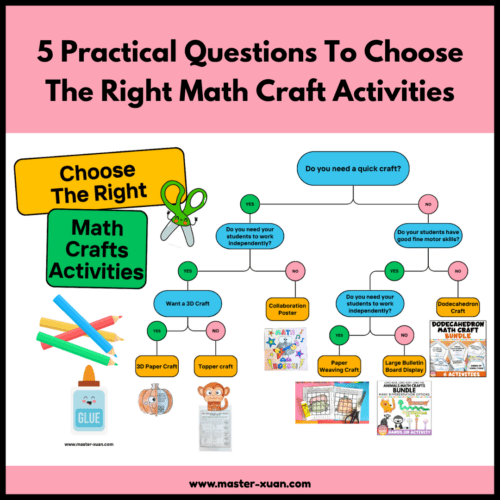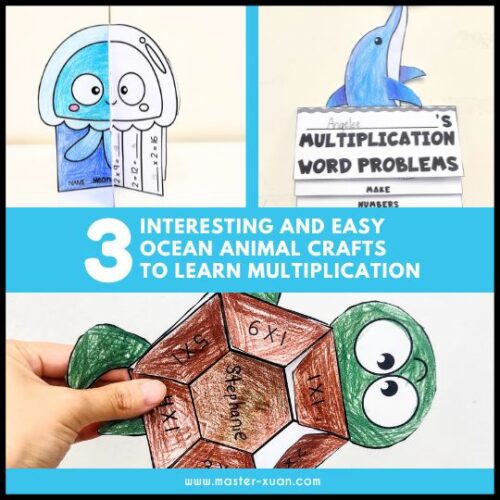Are you looking for a math teaching strategy to be a better primary teacher? Then I’m sorry to let you know that there isn’t one perfect secret sauce to being the best teacher.
Instead, you will need lots of tips and strategies in teaching mathematics in elementary to help become the superstar teacher that you aspire to be.
This article will give you 15 practical tips for teaching primary maths, which should help you improve your student’s learning journey if you apply them in your lesson.
Here’s a summary:

1) Use lesson hooks or math starters
Grab students’ attention right from the start with engaging ways.
Related read: 5 Hooks For Math Lessons That Will Engage Your Students Easily & Quickly
2) Have a clear objective or intended learning outcomes
It’s important to make sure that you and your students understand the purpose of the lesson.
Some feel that we should tell students right at the beginning because it will help them stay focused and we can celebrate when they achieved it.
However, a common argument against using learning objectives, is we are limiting the many learning possibilities a student may learn from that lesson.
Personally, I feel that everyone should know the learning objectives as it acts as a goal that we are working towards. Of course, if we manage to learn something more in the journey, that will be a blessed addition.
But it is your freedom if you choose to reveal the learning outcomes until everyone shared what they learn for the day or guesses what is the goal.
3) Focus on one concept at a time
Don’t try to teach too many concepts in one lesson.
Students need time to digest what they learn.
4) Give explicit instruction
Make your instructions short and simple to get your point across.
Break them into small steps so students can follow them.
Don’t jump certain steps.
Some actions you may think it is just common sense, but as we all know common sense is not exactly so common and need to be taught.
Another reminder, make sure students are listening when you give your instruction. It is no use giving out the perfect instructions when students are not even paying attention.
If it is an important step, ask students to repeat your instructions to ensure they listened.
5) Give lots of examples
Sometimes, the perfect instructions are just not enough.
You need to model or give examples to show them how it works.
Often, even when the game rules are written, students only learn how to play it after playing it once or twice. We learn better when we do it.
So show your students how it works. Twice! Or maybe more than that…
6) Use lots of visuals
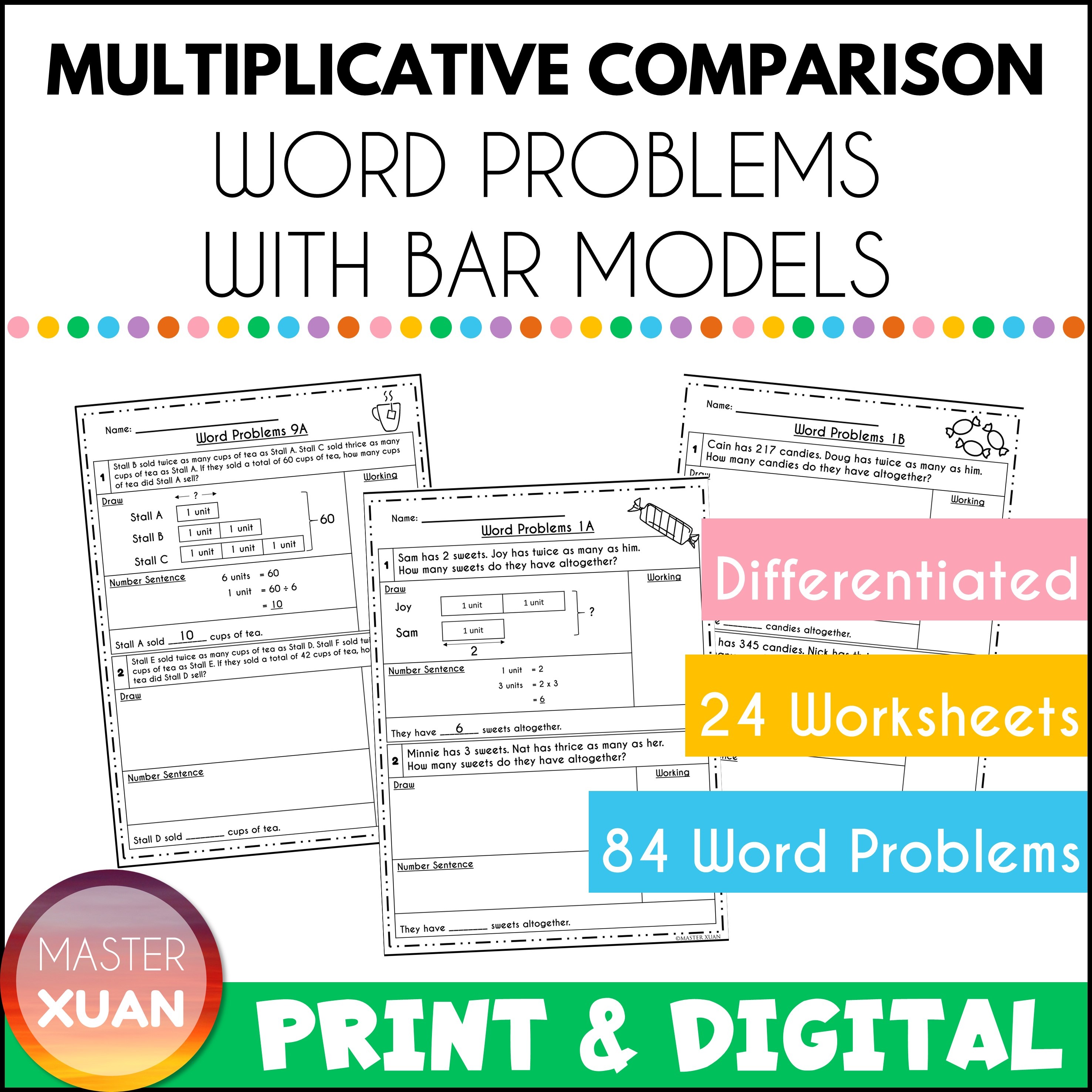
One of the easiest ways to make learning more fun is by using visual aids. These can range from pictures to models to videos.
They can also be used as a way to explain concepts to children who struggle with language. This is why we like to use models as a guide for solving word problems.
Note: It is the second step of the Concrete, Pictorial, Abstract approach.
7) Use plenty of activities and games
As an elementary teacher, using games and activities are a must.

Games and activities help to reduce resistance to learning, providing students the stimulation and motivation to practice math skills.
Choose games and activities that review skills that require much practice (e.g. multiplication and division facts). This way students will be willing to practice again and again the important skills that they need to master.
Furthermore, when students are engaged and having fun, they are more likely to remember the lesson learned.
8) Varied activities per session
It is essential to use varied activities during each lesson as students’ attention spans are short.
This will ensure that students are not bored and will retain what they have learned.
Furthermore, by varying the activities, you keep lessons fresh and interesting for students.
Some examples:
- Scavenger Hunt
- Games
- Worksheets
- Crafts
- Hands-on activities
- Logic puzzles
9) Use Varied Methods & Ways To Answer The Questions
Not only do activities need to vary, but the questions you ask also need to vary.
This help to expose students to the different types of questions.
In addition, it also helps to verify that they do understand the concept, know how to apply it, and not just follow procedures.
Furthermore, different ways of presenting the questions help to keep them fresh and interesting.
10) Differentiate
Different people learn at different rates and with different learning styles.
We need to cater to all our students and ensure they are doing activities of their level or slightly above it.
This is so to prevent them from being discouraged and feeling helpless in their learning journey.
Differentiation can work in many ways. You can choose to vary the activities to cater to the different learning styles of learners. Or you can choose to give the appropriate difficulty levels to different students.
11) Use lots of repetition
One of the most effective strategies in teaching mathematics is to repeat, repeat, and repeat!
Repetition is an effective method of learning because it helps students retain and recall information!
That is also the reason why we always say practice makes perfect. Of course, now we learn that it is essential that we are practicing the correct way to achieve the ideal result.
12) Revise often
It is very important to revise math skills that are taught previously as students tend to forget them. Spaced practice will be beneficial to your students.
So don’t just teach one topic and only revisit them when the examination comes!
13) Give plenty of quizzes
It doesn’t have to be a long test and stressful.
Just a formative assessment so that you and your students know how much knowledge your students really know how to apply.
Of course, you can use other ways to assess your students, but a grade will be a more direct way to show a student’s progression.
Furthermore, with more quizzes, students will get used to it and it acts as a rehearsal for those formal examinations.
14) Interact individually
Most young students like to interact with the teachers in a good way (not those times when you are screaming their names across the class).
Talk to them one to one, look them in their eyes and let them know you are there for them!
They will perform better or at least have a happier learning journey when they know they got you to support them.
15) Give lots of encouragement and praises
Everyone loves compliment especially when it is personalized.
Giving students positive feedback helps to boost students’ confidence and motivate them.
Remember to praise them for their effort to foster a growth mindset.
Conclusion
I hope the above tips helped you in some way! Structure them and form your very own math teaching strategy today!
Remember, the way to make full use of this article is to apply the following 15 tips:
- Use lesson hooks or math starters
- Clear objective or intended learning outcomes
- Focus on one concept at a time
- Explicit instruction
- Give lots of examples
- Use lots of visuals
- Use plenty of activities and games
- Varied activities per session
- Varied methods and ways to answer the questions
- Differentiate
- Repetition
- Revise often
- Give plenty of quizzes
- Interact individually
- Give lots of encouragement and praises
Which math teaching strategy do you think is the most important? Share with your teacher buddy today!
Related read:
- The Top 3 Strategies For Teaching Math In Small Groups Or Classes
- 3 Easy & Simple Ways To Reduce Stress When Teaching In Small Groups
- Using Scaffolding For Learning Math Effectively In 9 Simple Ways
Here are some pins that you can save to bookmark this post. Save them to your Pinterest Board now! ↓
